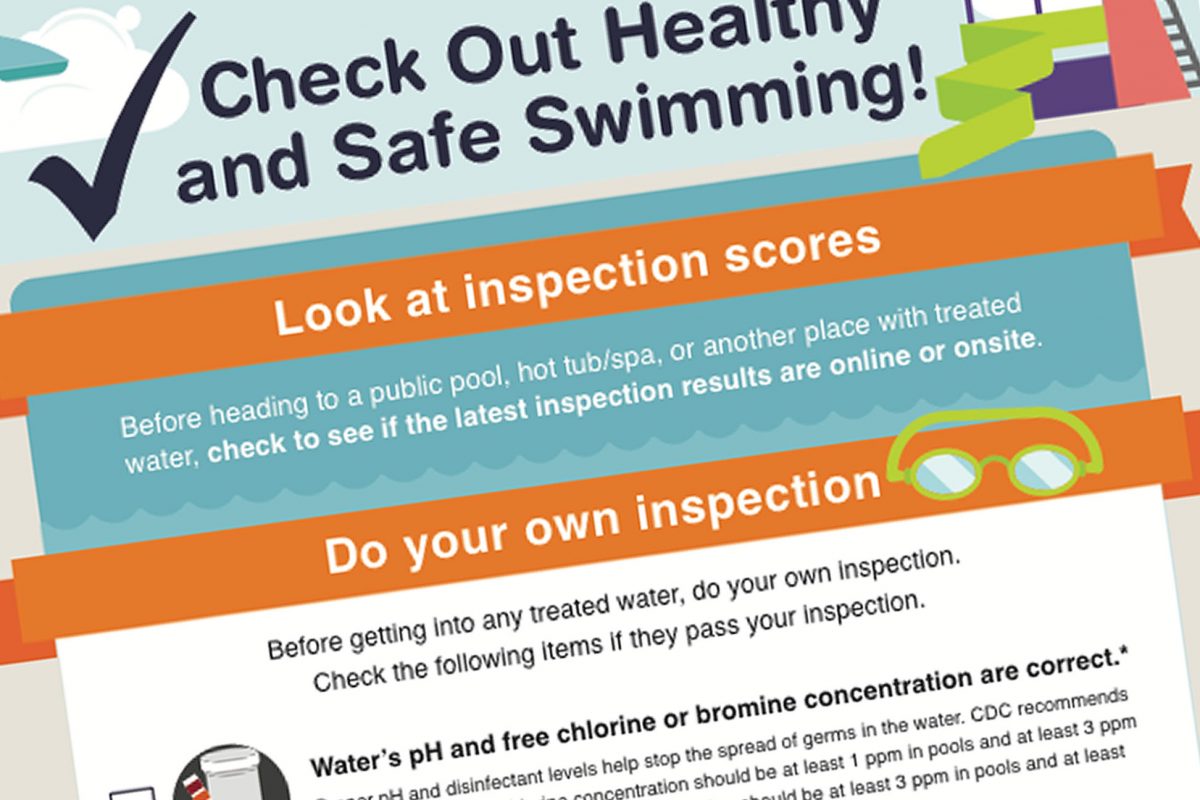The most common violations reported were related to improper pH (15 percent), safety equipment (13 percent), and disinfectant concentration (12 percent).
Official release from the Centers for Disease Control and Prevention…
Every year, serious health and safety violations force thousands of public pools, hot tubs, and water playgrounds to close, according to a report published in CDC’s Morbidity and Mortality Weekly Report. But there’s a lot you can do to protect yourself and your family.
Swimming is a great way to exercise and spend time with family and friends but, as with any form of exercise, there are risks. Inspections of public pools and other aquatic venues enforce standards that can prevent illness, drowning, and pool-chemical–associated injuries such as poisoning or burns.
“No one should get sick or hurt when visiting a public pool, hot tub, or water playground,” said Beth Bell, M.D., M.P.H., director of CDC’s National Center for Emerging and Zoonotic Infectious Diseases. “That’s why public health and aquatics professionals work together to improve the operation and maintenance of these public places so people will be healthy and safe when they swim.”
Inspection data were collected in 2013 in the five states with the most public pools and hot tubs: Arizona, California, Florida, New York and Texas. Researchers reviewed data on 84,187 routine inspections of 48,632 public aquatic venues, including pools, hot tubs, water playgrounds and other places where people swim in treated water.
Among the key findings:
- Most inspections of public aquatic venues (almost 80 percent) identified at least one violation.
- 1 in 8 inspections resulted in immediate closure because of serious health and safety violations.
- 1 in 5 kiddie/wading pools were closed—the highest proportion of closures among all inspected venues.
- The most common violations reported were related to improper pH (15 percent), safety equipment (13 percent), and disinfectant concentration (12 percent).
“Environmental health practitioners, or public health inspectors, play a very important role in protecting public health. However, almost one third of local health departments do not regulate, inspect, or license public pools, hot tubs, and water playgrounds,” said Michele Hlavsa, R.N., M.P.H., chief of CDC’s Healthy Swimming Program. “We should all check for inspection results online or on site before using public pools, hot tubs, or water playgrounds and do our own inspection before getting into the water.”
Healthy and Safe Swimming Week
Healthy and Safe Swimming Week begins on May 23, 2016. CDC encourages swimmers to help protect themselves from getting sick or hurt at pools or hot tubs.
When visiting public or private pools, swimmers and parents of young swimmers can complete their own inspection using a short and easy checklist that will identify some of the most common health and safety problems:
- Use a test strip (available at most superstores or pool-supply stores) to determine if the pH and free chlorine or bromine concentration are correct. CDC recommends:
- Free chlorine concentration of at least 1 ppm in pools and at least 3 ppm in hot tubs/spas.
- Free bromine concentration of at least 3 ppm in pools and at least 4 ppm in hot tubs/spas.
- pH of 7.2–7.8.
- Make sure the drain at the bottom of the deep end is visible. Clear water allows lifeguards and other swimmers to see swimmers underwater who might need help.
- Check that drain covers appear to be secured and in good repair. Swimmers can get trapped underwater by a loose or broken drain cover.
- Confirm that a lifeguard is on duty at public venues. If not, check whether safety equipment like a rescue ring with rope or pole is available.
If you find problems, do not get into the water and tell the person in charge so the problems can be fixed. For more information and other healthy and safe swimming steps, visit www.cdc.gov/healthywater/swimming.
Before CDC-led development of the Model Aquatic Health Code, there were no national standards for the design, construction, operation, and maintenance practices to prevent illness and injury at public treated recreational water venues. Now, local and state authorities can voluntarily adopt these science- and best practices–based guidelines to make swimming and other activities at public pools and other aquatic venues healthier and safer. The second edition of the code will be released during the 2016 swim season. For more information about the Model Aquatic Health Code, visit www.cdc.gov/mahc.


